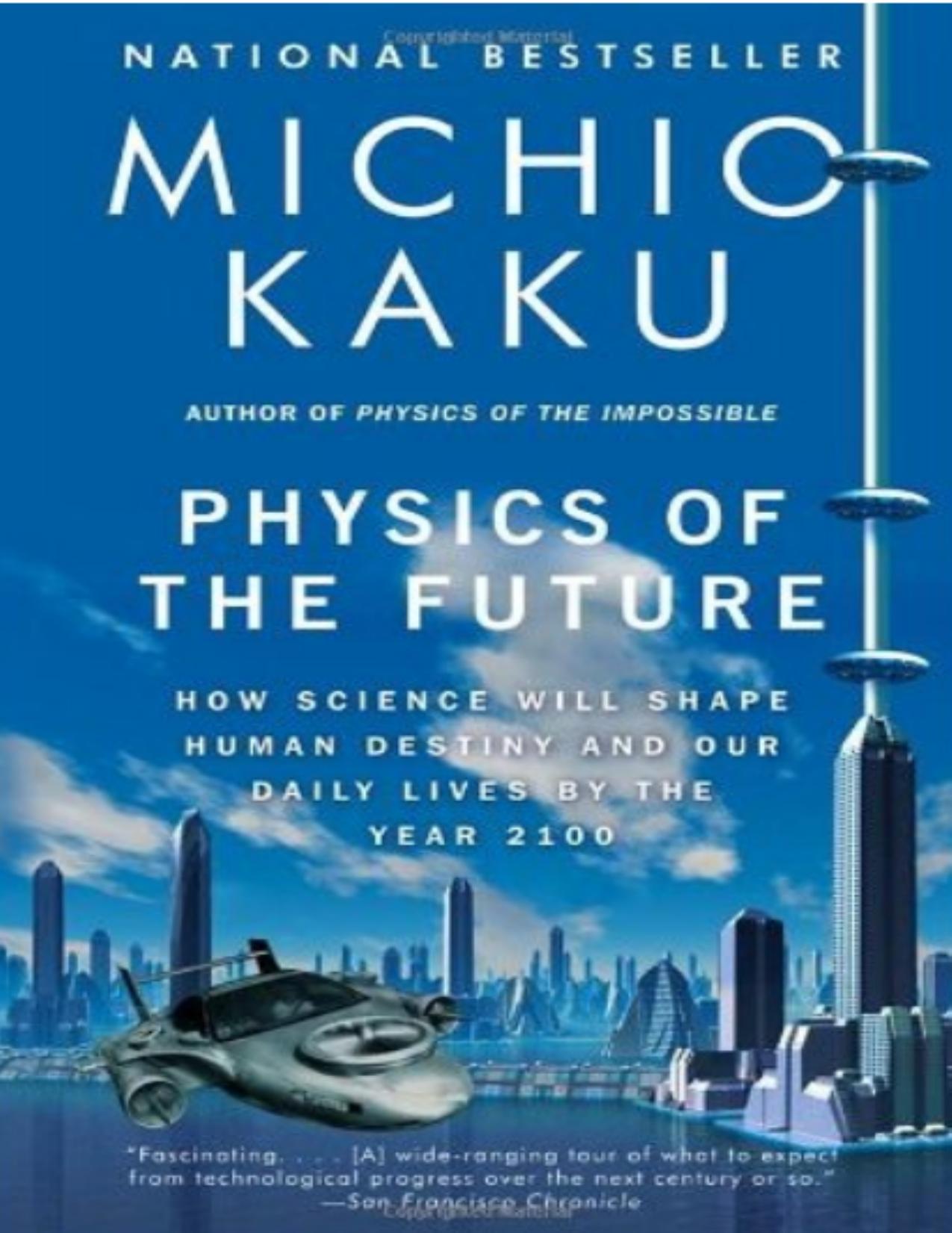Physics of the Future: How Science Will Shape Human Destiny and Our Daily Lives by the Year 2100 by Michio Kaku

Author:Michio Kaku [Kaku, Michio]
Language: eng
Format: epub, mobi, azw3, pdf
Tags: General, Future Studies, Social Science, Science, Physics, History, Technology & Engineering, Philosophy & Social Aspects, Social Aspects
ISBN: 9780385530804
Publisher: Random House Digital, Inc.
Published: 2011-03-15T04:00:00+00:00
SHAPE-SHIFTING
In the movie Terminator 2: Judgment Day, Arnold Schwarzenegger is attacked by an advanced robot from the future, a T-1000, which is made of liquid metal. Resembling a quivering mass of mercury, it can change shape and slither its way through any obstacle. It can seep through the tiniest cracks and fashion deadly weapons by reshaping its hands and feet. And then it can suddenly re-form into its original shape to carry on its murderous rampage. The T-1000 appeared to be unstoppable, the perfect killing machine.
All this was science fiction, of course. The technology of today does not allow you to change a solid object at will. Yet by midcentury a form of this shape-shifting technology may become commonplace. In fact, one of the main companies driving this technology is Intel.
Ironically, by 2050, most of the fruits of nanotechnology will be everywhere, but hidden from view. Almost every product will be enhanced via molecular manufacturing techniques, so they will become superstrong, resistant, conductive, and flexible. Nanotechnology will also give us sensors that constantly protect and help us, distributed in the environment, hidden away, beneath the surface of our consciousness. We will walk down the street and everything will appear to be the same, so we will never know how nanotechnology has changed the world around us.
But there is one consequence of nanotechnology that will be obvious.
The Terminator T-1000 killer robot is perhaps the most dramatic example of an object from the field called programmable matter, which may allow us one day to change the shape, color, and physical form of an object with the push of a button. On a primitive level, even a neon sign is a form of programmable matter, since you can flick a light switch and send electricity through a tube of gas. The electricity excites the gas atoms, which then decay back to their normal state, releasing light in the process. A more sophisticated version of this is the LCD display found on computer screens everywhere. The LCD contains a liquid crystal that becomes opaque when a small electrical current is applied. Thus, by regulating the electrical current flowing inside a liquid crystal, one can create colors and shapes on a screen with the push of a button.
The scientists at Intel are much more ambitious. They visualize using programmable matter to actually change the shape of a solid object, just like in science fiction. The idea is simple: create a computer chip in the shape of a tiny grain of sand. These smart grains of sand allow you to change the static electric charge on the surface, so that these grains can attract and repel each other. With one set of charges, these grains can line up to form a certain array. But you can reprogram these grains so that their electrical charges change. Instantly, these grains rearrange themselves, forming an entirely different arrangement. These grains are called “catoms” (short for claytronic atoms) since they can form a wide range of objects by simply changing their charges, much like atoms.
Download
Physics of the Future: How Science Will Shape Human Destiny and Our Daily Lives by the Year 2100 by Michio Kaku.mobi
Physics of the Future: How Science Will Shape Human Destiny and Our Daily Lives by the Year 2100 by Michio Kaku.azw3
Physics of the Future: How Science Will Shape Human Destiny and Our Daily Lives by the Year 2100 by Michio Kaku.pdf
This site does not store any files on its server. We only index and link to content provided by other sites. Please contact the content providers to delete copyright contents if any and email us, we'll remove relevant links or contents immediately.
| Anthropology | Archaeology |
| Philosophy | Politics & Government |
| Social Sciences | Sociology |
| Women's Studies |
Cecilia; Or, Memoirs of an Heiress — Volume 1 by Fanny Burney(32498)
Cecilia; Or, Memoirs of an Heiress — Volume 2 by Fanny Burney(31911)
Cecilia; Or, Memoirs of an Heiress — Volume 3 by Fanny Burney(31895)
The Great Music City by Andrea Baker(31759)
We're Going to Need More Wine by Gabrielle Union(19004)
All the Missing Girls by Megan Miranda(15781)
Pimp by Iceberg Slim(14437)
Bombshells: Glamour Girls of a Lifetime by Sullivan Steve(14024)
For the Love of Europe by Rick Steves(13617)
Talking to Strangers by Malcolm Gladwell(13293)
Norse Mythology by Gaiman Neil(13281)
Fifty Shades Freed by E L James(13188)
Mindhunter: Inside the FBI's Elite Serial Crime Unit by John E. Douglas & Mark Olshaker(9265)
Crazy Rich Asians by Kevin Kwan(9224)
The Lost Art of Listening by Michael P. Nichols(7455)
Enlightenment Now: The Case for Reason, Science, Humanism, and Progress by Steven Pinker(7274)
The Four Agreements by Don Miguel Ruiz(6703)
Bad Blood by John Carreyrou(6584)
Weapons of Math Destruction by Cathy O'Neil(6220)
